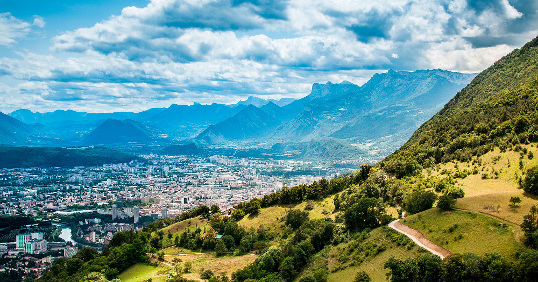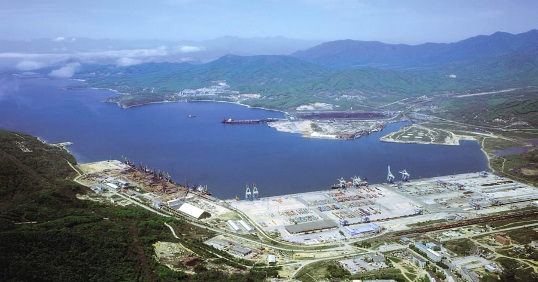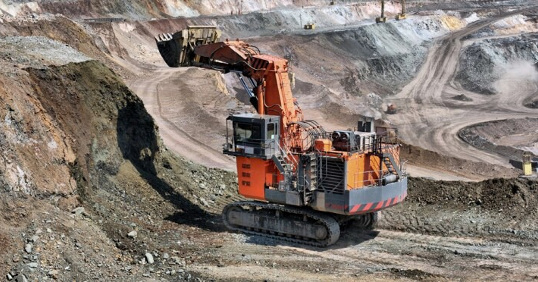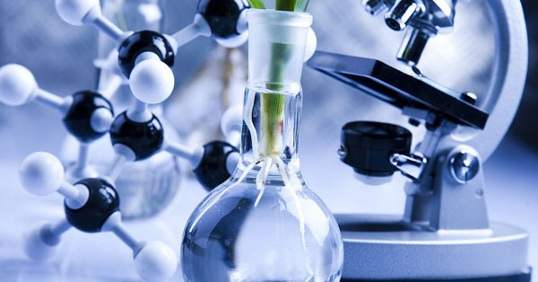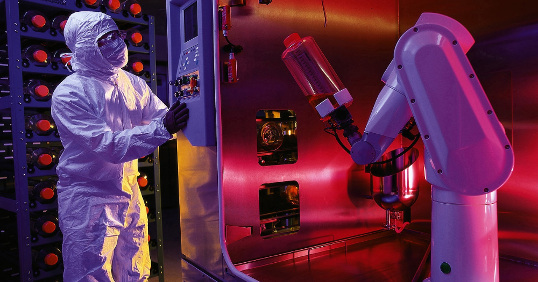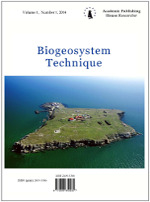2 December 24, 2024
Articles
1. Raisa A. Mukabenova, Altana B. Adyanova, Anatoly V. Barakhov, Alexey A. Buluktaev, Saglara S. Mandzhieva, Arpna Kumari, Rupesh K. Singh, Avnish Chauhan
Cation Exchange Capacity in the Arid Soils of the Republic of Kalmykia
Biogeosystem Technique. 2024. 11(2): 84-90.
Number of views: 132 Download in PDF
2. Prachi Kurhade, Himanshu Bansal, Priyadarshani Rajput, Sakshi SinghBiogeosystem Technique. 2024. 11(2): 84-90.
Abstract:
On the basis of field research, the current state of soils in the eastern zone of the Republic of Kalmykia was studied. The predominant soil cover in this area is represented by brown saline soils and brown-desert soils in a complex with salt licks. The purpose of the study is to study the absorption complex, as well as the composition and content of exchangeable cations in the soils of the eastern zone of the Republic of Kalmykia. cations: calcium (Ca2+) and magnesium (Mg2+) and an assessment of the level of soil absorption capacity in 7 settlements of the Yashkul district of the Republic of Kalmykia. To conduct the research, 15 monitoring sites were placed on the borders and in the center of settlements, the background sample was taken at a distance of 500 m from the boundaries of the residential zone. The determination of the physical and chemical properties of the soils was carried out according to GOST and generally accepted methods. The results of the study showed that the level of absorption capacity of soils in the study area ranges from low to medium. The absorbent complex is saturated with the cations Ca2+ and Mg2+, and the content of exchangeable Ca2+ predominates over the content of Mg2+ in the range of 2 to 4 times.
On the basis of field research, the current state of soils in the eastern zone of the Republic of Kalmykia was studied. The predominant soil cover in this area is represented by brown saline soils and brown-desert soils in a complex with salt licks. The purpose of the study is to study the absorption complex, as well as the composition and content of exchangeable cations in the soils of the eastern zone of the Republic of Kalmykia. cations: calcium (Ca2+) and magnesium (Mg2+) and an assessment of the level of soil absorption capacity in 7 settlements of the Yashkul district of the Republic of Kalmykia. To conduct the research, 15 monitoring sites were placed on the borders and in the center of settlements, the background sample was taken at a distance of 500 m from the boundaries of the residential zone. The determination of the physical and chemical properties of the soils was carried out according to GOST and generally accepted methods. The results of the study showed that the level of absorption capacity of soils in the study area ranges from low to medium. The absorbent complex is saturated with the cations Ca2+ and Mg2+, and the content of exchangeable Ca2+ predominates over the content of Mg2+ in the range of 2 to 4 times.
Number of views: 132 Download in PDF
Advancements in Crystallogens Nanoparticles Fabricated by Agricultural Wastes
Biogeosystem Technique. 2024. 11(2): 91-107.
Number of views: 226 Download in PDF
3. Natalia V. Krupenina, Maksim Diuldin, Daniil S. Amelakhanov, Denis A. Egorov, Sergey E. Nikitin, Yury A. Nikolaev, Vasily Yu. Rud, Shoirbek A. Olimov, Yuri K. Smirnov, Sharifa Utamuradova, Daria A. ValiullinaBiogeosystem Technique. 2024. 11(2): 91-107.
Abstract:
Using nanotechnology in agriculture has become a game-changing strategy to improve soil health, crop yield, and sustainability. This article investigates the production and uses of several nanoparticles obtained from agricultural wastes, such as those based on carbon, silicon, and lead. Carbon nanoparticles are created by processes such chemical vapor deposition, pyrolysis, and hydrothermal synthesis. They are valued for their large surface area, mechanical strength, and electrical conductivity. The nutrient cycle, water retention, and soil structure are all markedly enhanced by these nanoparticles. Synthesized from plentiful agricultural leftovers, silicon nanoparticles offer an affordable means of creating green fertilizers and boosting plant growth. Many studies have been done on their synthesis using chemical, physical, and environmentally friendly approaches. This article highlights the potential and challenges of utilizing nanotechnology in agriculture, emphasizing the importance of sustainable synthesis methods. The development of efficient nanoparticle production techniques from agricultural wastes offers innovative solutions to agricultural challenges, promoting a sustainable and resilient agricultural system.
Using nanotechnology in agriculture has become a game-changing strategy to improve soil health, crop yield, and sustainability. This article investigates the production and uses of several nanoparticles obtained from agricultural wastes, such as those based on carbon, silicon, and lead. Carbon nanoparticles are created by processes such chemical vapor deposition, pyrolysis, and hydrothermal synthesis. They are valued for their large surface area, mechanical strength, and electrical conductivity. The nutrient cycle, water retention, and soil structure are all markedly enhanced by these nanoparticles. Synthesized from plentiful agricultural leftovers, silicon nanoparticles offer an affordable means of creating green fertilizers and boosting plant growth. Many studies have been done on their synthesis using chemical, physical, and environmentally friendly approaches. This article highlights the potential and challenges of utilizing nanotechnology in agriculture, emphasizing the importance of sustainable synthesis methods. The development of efficient nanoparticle production techniques from agricultural wastes offers innovative solutions to agricultural challenges, promoting a sustainable and resilient agricultural system.
Number of views: 226 Download in PDF
Mitigating the Negative Impacts of Caspian Sea Level Fluctuations On Coastal Infrastructure
Biogeosystem Technique. 2024. 11(2): 108-114.
Number of views: 141 Download in PDF
4. Vsevolod V. Kirgizov, Maksim Diuldin, Natalia V. Krupenina, Shoirbek A. Olimov, Vasiliy Yu. Rud, Sharifa Utamuradova, Lenar R. ValiullinBiogeosystem Technique. 2024. 11(2): 108-114.
Abstract:
Natural fluctuations of the Caspian Sea level create many problems for its coastal infrastructure, complicate navigation and fishing, and negatively affect the ecological situation both in the coastal zone and in the coastal water area. It is necessary to deal with a complexity in a sea area alteration very carefully in order not to destroy the fragile ecological balance of coastal flora and fauna. To reduce the negative consequences of a northern water area shoaling of the Caspian Sea, a dredging is constantly carried out, which requires a careful planning due to a constant variability of the sea area boundaries. Taking into account this fact, the problem of permanent monitoring of newly formed closed water bodies with the help of autonomous water drones that allow to quickly build a 3d model of the water body for dredging planning becomes urgent. As a rule, such bodies of water are formed far from large settlements and energy sources, and the process of surveying the water body can stretch in time, so the problem of recharging the batteries of the drone becomes very relevant and is solved with the help of solar panels. The data received from the distance sensors can be noisy, so they are subjected to a de-noising procedure.
Natural fluctuations of the Caspian Sea level create many problems for its coastal infrastructure, complicate navigation and fishing, and negatively affect the ecological situation both in the coastal zone and in the coastal water area. It is necessary to deal with a complexity in a sea area alteration very carefully in order not to destroy the fragile ecological balance of coastal flora and fauna. To reduce the negative consequences of a northern water area shoaling of the Caspian Sea, a dredging is constantly carried out, which requires a careful planning due to a constant variability of the sea area boundaries. Taking into account this fact, the problem of permanent monitoring of newly formed closed water bodies with the help of autonomous water drones that allow to quickly build a 3d model of the water body for dredging planning becomes urgent. As a rule, such bodies of water are formed far from large settlements and energy sources, and the process of surveying the water body can stretch in time, so the problem of recharging the batteries of the drone becomes very relevant and is solved with the help of solar panels. The data received from the distance sensors can be noisy, so they are subjected to a de-noising procedure.
Number of views: 141 Download in PDF
Features of the Study of Biofouling on Ship Hulls Using Modern Possibilities of Artificial Intelligence
Biogeosystem Technique. 2024. 11(2): 115-123.
Number of views: 138 Download in PDF
5. Rufiya G. Karimova, Anna N. Lebedeva, Ekaterina A. GorokhovaBiogeosystem Technique. 2024. 11(2): 115-123.
Abstract:
The study of biofouling on ship hulls has emerged as a critical area of research due to its significant impact on maritime operations and vessel longevity. This article presents a comprehensive overview of the current state of biofouling, emphasizing its detrimental effects on corrosion processes affecting ship structures. Biofouling not only accelerates corrosion but also increases fuel consumption, thereby raising operational costs and contributing to environmental concerns. The article delves into the intricate structure of biofouling, exploring the various organisms involved and their interactions with the hull materials. Furthermore, the application of artificial intelligence (AI) in underwater drones for biofouling removal is discussed in detail. A classification of underwater drones specifically designed for this purpose is provided, alongside a schematic representation of their construction. This section highlights the technological advancements that enable drones to autonomously detect and mitigate biofouling, showcasing the integration of AI algorithms for enhanced performance. Additionally, the article describes the design of a cleaning device attached to the drone, detailing its operational mechanisms and effectiveness in biofouling removal. A brief overview of the drone's control system is also included, illustrating how AI facilitates precise navigation and task execution. This research underscores the potential of modern AI technologies in revolutionizing the management of biofouling, ultimately contributing to more sustainable maritime practices and improved vessel maintenance strategies.
The study of biofouling on ship hulls has emerged as a critical area of research due to its significant impact on maritime operations and vessel longevity. This article presents a comprehensive overview of the current state of biofouling, emphasizing its detrimental effects on corrosion processes affecting ship structures. Biofouling not only accelerates corrosion but also increases fuel consumption, thereby raising operational costs and contributing to environmental concerns. The article delves into the intricate structure of biofouling, exploring the various organisms involved and their interactions with the hull materials. Furthermore, the application of artificial intelligence (AI) in underwater drones for biofouling removal is discussed in detail. A classification of underwater drones specifically designed for this purpose is provided, alongside a schematic representation of their construction. This section highlights the technological advancements that enable drones to autonomously detect and mitigate biofouling, showcasing the integration of AI algorithms for enhanced performance. Additionally, the article describes the design of a cleaning device attached to the drone, detailing its operational mechanisms and effectiveness in biofouling removal. A brief overview of the drone's control system is also included, illustrating how AI facilitates precise navigation and task execution. This research underscores the potential of modern AI technologies in revolutionizing the management of biofouling, ultimately contributing to more sustainable maritime practices and improved vessel maintenance strategies.
Number of views: 138 Download in PDF
Influence of Homocysteine on Metabolic Processes in Biological Systems
Biogeosystem Technique. 2024. 11(2): 124-129.
Number of views: 121 Download in PDF
Biogeosystem Technique. 2024. 11(2): 124-129.
Abstract:
The study is devoted to determining the level of homocysteine in mammals and determining the extent of its influence on metabolic processes. Homocysteine is a sulfur-containing non-proteinogenic amino acid that is formed as a result of the oxidation-reduction metabolism of methionine. Homocysteine metabolism includes transmethylation, remethylation, and transsulfation reactions. When metabolism is disrupted, homocysteine formation increases, which leads to hyperhomocysteinemia. In this work, homocysteine levels were determined in rats with experimental heart failure and experimental chronic kidney disease in rats. Chronic heart failure was modeled by intraperitoneal administration of phenylephrine for 28 days. Chronic kidney disease was modeled by 5/6 nephrectomy. The residual kidney resection model was performed in two sessions under 2 % isoflurane anesthesia: during the first week, approximately 2/3 of the left kidney was removed from the rats, and during the second week, the entire right kidney was removed. The level of homocysteine, creatinine, urea, potassium, sodium, chlorine ions, aspartate aminotransferase, alanine aminotransferase, lactate dehydrogenase activity were determined in the blood 2 and 6 months after pathology modeling. Based on the results of the studies, it was established that an increase in homocysteine levels is observed in a number of pathologies, such as chronic heart failure and chronic kidney disease. An increase in the concentration of homocysteine in the blood plasma was revealed as the pathology progressed. The level of homocysteine in plasma correlates with the level of creatinine and urea and is absolutely not associated with the level of sodium, potassium, chloride ions and the activity of metabolic enzymes. The results of the study allow us to recommend measuring the concentration of homocysteine in plasma to determine the degree of metabolic disorders.
The study is devoted to determining the level of homocysteine in mammals and determining the extent of its influence on metabolic processes. Homocysteine is a sulfur-containing non-proteinogenic amino acid that is formed as a result of the oxidation-reduction metabolism of methionine. Homocysteine metabolism includes transmethylation, remethylation, and transsulfation reactions. When metabolism is disrupted, homocysteine formation increases, which leads to hyperhomocysteinemia. In this work, homocysteine levels were determined in rats with experimental heart failure and experimental chronic kidney disease in rats. Chronic heart failure was modeled by intraperitoneal administration of phenylephrine for 28 days. Chronic kidney disease was modeled by 5/6 nephrectomy. The residual kidney resection model was performed in two sessions under 2 % isoflurane anesthesia: during the first week, approximately 2/3 of the left kidney was removed from the rats, and during the second week, the entire right kidney was removed. The level of homocysteine, creatinine, urea, potassium, sodium, chlorine ions, aspartate aminotransferase, alanine aminotransferase, lactate dehydrogenase activity were determined in the blood 2 and 6 months after pathology modeling. Based on the results of the studies, it was established that an increase in homocysteine levels is observed in a number of pathologies, such as chronic heart failure and chronic kidney disease. An increase in the concentration of homocysteine in the blood plasma was revealed as the pathology progressed. The level of homocysteine in plasma correlates with the level of creatinine and urea and is absolutely not associated with the level of sodium, potassium, chloride ions and the activity of metabolic enzymes. The results of the study allow us to recommend measuring the concentration of homocysteine in plasma to determine the degree of metabolic disorders.
Number of views: 121 Download in PDF
In Memoriam
6. Valery P. Kalinitchenko
In Memoriam of Valery Ivanovich Glazko
Biogeosystem Technique. 2024. 11(2): 130-131.
Number of views: 135 Download in PDF
7. Biogeosystem Technique. 2024. 11(2): 130-131.
Abstract:
In memoriam of Valery Ivanovich Glazko passed away on July 30, 2024, at the 76th year of life. Doctor of Agricultural Sciences, Academician of the Russian Academy of Sciences, Academician and member of the Presidium of the Russian Academy of Natural Sciences, Member of the Nanotechnology Society of Russia, Laureate of the Government of the Russian Federation in the field of education.
In memoriam of Valery Ivanovich Glazko passed away on July 30, 2024, at the 76th year of life. Doctor of Agricultural Sciences, Academician of the Russian Academy of Sciences, Academician and member of the Presidium of the Russian Academy of Natural Sciences, Member of the Nanotechnology Society of Russia, Laureate of the Government of the Russian Federation in the field of education.
Number of views: 135 Download in PDF



